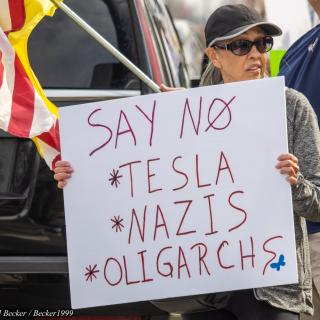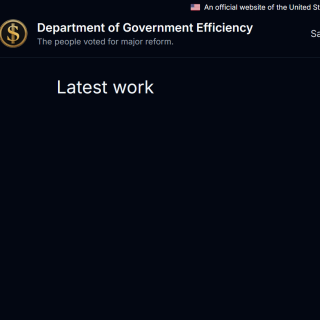Who knew there were so many socialists and anti-capitalists in Columbus, Ohio?
If you go to rallies and demonstrations and meetings across this city, you’re sure to see the participation or leadership of one socialist group or another.
Indeed, the general interest in socialist ideas includes a wider pool of people than those who are formally members of socialist organizations.
Talk to activists in the burgeoning social justice communities in our city and you’ll see much criticism of capitalist greed and stark inequality. Many consider themselves socialists of one kind or another. Certainly not what the mainstream media means when it calls Ohio a “red state.”
Nevertheless, the explosion of interest in organized socialist groups right now is remarkable in a time when there are many other avenues for expressing resistance to the atrocities and inequalities of society, from non-government organizations to electoral campaigns to service-oriented groups. And at a time when the far-right has seen resurgence, encouraged by Trump’s campaign and presidency.
By all accounts, the reds are thriving.
The Columbus branches of Democratic Socialists of America (DSA), Socialist Alternative (SA), and the International Socialist Organization (ISO)—which I belong to—are active and visible across the city, holding regular public meetings, organizing actions and speakouts and gatherings, and working together with other organizations and individuals on a variety of social justice projects.
Beyond these three organizations, my focus here, there are also many individuals who belong to other socialist groups, including the Socialist Party and Solidarity, and have made important contributions to this city’s growing left.
So what accounts for this new visibility of socialists in the city—in the heartland of a country that has devoured its left and propagated the scripture of capitalist benefit?
I’ll point to some of the contexts that have produced this new growth of socialist organizations. And since I’m an active participant in this growth and not just a spectator, I’ll share some of my experience in building ISO Columbus since 2004. I’m sure much of what I have to say resonates with the experiences of DSA and SA comrades, with whom we regularly collaborate.
———
First of all, the growth of socialist organizing in Columbus is part of a national shift in political consciousness over the last several years, especially among youth who continue to face student debt, job insecurity, homelessness and uncertainty.
For youth who belong to Black, trans, immigrant, Muslim, poor, and/or other marginalized communities, this insecurity is doubled and tripled and quadrupled by the hostility and nastiness of the police, the deportation system, and the surveillance state.
In this context, struggles against oppression have exploded all over, causing a rupture in mainstream ideas about why society is the way it is. Youth have started to question this entire system—organized around profit rather than human need—and to look for alternatives.
Around the #OccupyWallStreet protests of 2011, a Pew Research Center pollreported that 47% of youth from 18-29 had a negative view of “capitalism”—and 49% has a positive view of “socialism.” Similarly, a Harvard studyin late 2017 showed that a majority of youth from 18 to 29 were opposed to capitalism.
Three factors help explain this resurgence of socialism today at the national level:
(1) The repeated failures of capitalism itself, as the so-called recovery from the recession of 2008 has been meager for most working people,
(2) The resurgence of mass struggle, including (but not limited to) #OccupyWallStreet, protesting the murder of Trayvon Martin, #BlackLivesMatter, #SayHerName, the struggle against the Keystone XL pipeline, Standing Rock, the sanctuary movement, the Women’s Marches, struggles for the $15 minimum wage, #MeToo, and the growing support for Palestine and the BDS movement, and
(3) The growing conviction in the US—that simply blew up after Bernie Sanders’ 2016 campaign—that socialism was not a bad word but represented an alternative vision beyond single-issue campaigns.
DSA, SA, and ISO, in this context, have garnered large national profiles within progressive and left circles.
Hundreds and hundreds of people have joined socialist groups recently—many of them in DSA, the largest socialist organization in the country. SA’s Kshama Sawant, winning a Seattle City Council seat while running as an open socialist, showed the possibility of left-wing, independent electoral campaigns today. And the ISO’s national conferences have been larger than ever, showing the strength of local branches and featuring speakers like author Keeanga-Yamahtta Taylor and sportswriter Dave Zirin, whose work has resonated far beyond the far left.
The wide popularity of the left-wing publisher Haymarket Books and the socialist magazine Jacobin also demonstrate the new visibility of socialist ideas to broader audiences.
The far right, recognizing the popularity of socialist ideas and groups, attributes them to the activities of left-wing professors on campus, and has put a target on our backs. While I certainly do what I can as an OSU professor to get students to engage with issues of social justice, equality, and the right of all humans to live safe and peaceful lives, the fact is that professors do not make up the backbone of this new radicalization. There’s a much wider awakening in this country, there’s something new in the air.
People today don’t only want to fight and march and struggle. They want to push back against oppression in society and exploitation at work—and live in a fundamentally different world. That, at the end of the day, is why socialist organizations are growing, in Columbus and around the country.
----
When I got to Columbus in 2004, from the East Coast, I had already been an ISO organizer for several years. There was no branch here, and I set myself the task of building one. I knew then, and know now, how effective is to have a group whose activism and organizing is informed by a Marxist understanding of politics and history.
At the same time, I was and still am convinced that a socialist group not directly connected to the struggles on the ground would be ineffectual. Revolutionaries are not born but made, and direct struggles for justice are sites where ideas change and expand.
In that spirit, I sought out those who were activists in Columbus—against the Iraq war, for Palestine solidarity, for immigrants’ rights, against police brutality, etc.—and got involved in their efforts. In fact, many of those I met at that time are still cherished friends and comrades.
It soon became clear that some activists had ideas about liberation that went beyond a particular campaign or community. They were interested in learning about my involvement with the ISO, in socialist organizing, in political education and history, in escaping the chokehold of the Democrats, and in building connections between various movements and communities of people. Some of these ended up joining the ISO, and we gradually formed a branch at Ohio State.
In those early years of ISO Columbus we were active, worked with many others, developed our own ideas, and played a role in local struggles. Our work on campus amidst the great national uprising of Latinx immigrants on May 1, 2006, for instance, stands out. But our growth was not linear; we did not have the depth to sustain ourselves over time. Indeed, by August 2009, after much hard work and effort, I was once again the only ISO member in the city.
At times like these, it’s easy and understandable to call it quits. But because I had the support of a national organization, of fellow activists in Columbus, and a clear understanding of what I stood for, I was able to continue.
Since the Trump era’s context of political whiplashhas caused many activists to drop out of the movement or lose hope, I would like to outline the principles that kept me going, and still keep me going:
· The need for a collectively organized radical group with the political clarity and depth to withstand the ups and downs of movements as they emerge and dissolve
· The need for an organization where militant workers and students, in all our diversity, can strategize to connect our struggles against oppression and exploitation
· The need for a group that can be clear-eyed about and independent of the Democratic Party, which furthers the capitalist and imperialist agenda of the US while keeping its tone measured and being “less bad” than the Republicans (most of the time)
· The need for a politics that is unremittingly internationalist, locking arms with workers around the world, and fights for reforms while keeping our eye on the prize: a world organized around human need.
Over the next two years, the tide turned for our branch—along with the radicalizing wave described above. Comrades who joined the ISO Columbus in 2010 and 2011 quickly committed themselves to a long-term project, and became leaders of the branch.
By the time of Occupy in 2011, we were a solidly established group and were able to contribute to the movement. By the height of BlackLivesMatter in 2014-2015, we were able to play a significant role in mobilizing OSU, and people started joining the group in larger numbers. With Trump’s election this trend has just continued, with numerous fronts in the struggle opening up, and people looking to organizations for clarity and purpose.
Today, because of this quantitative and qualitative growth, ISO Columbus can sustain and coordinate several areas of work at the same time, including coalitional work with immigrant rights and anti-police brutality groups, developing our members’ political knowledge and leadership skills, protesting attacks on campus workers, mobilizing against the far right, supporting picket lines, attending and organizing rallies and events, building a left presence at Ohio State, and on and on.
While we always welcome joint work with DSA and SA, the united front approach we bring to organizing also means we work with groups with a wide range of politics. This allows us to hold onto our own revolutionary politics while seeking to work productively with others who are in struggle.
---
If you’re an activist who is interested in socialism, there’s no better time than the present to go to these different groups’ meetings to see their materials and hear their perspectives.
You might have questions about why there are three socialist groups, and not just one. You might be wondering why some socialists are more open to the Democrats than others. You might wonder what we think about the USSR and China. You might have other political questions—like how about how socialists make the link between capitalism and racism, sexism, homophobia, transphobia, etc.
The best way to figure this out is to talk to the different groups, ask questions, and get engaged in their activities. Because these questions matter a lot if we are really going to pull off a sustained and effective resistance, not to speak of a revolutionary transformation.
The socialist movement has valuable experience and insights about struggle in the short- and long-term, and building consistency as struggles rise and fade. We have also learned from mistakes and failures. I invite you to explore this movement—as we come together to take on Trump and the system that produced him—and consider what socialism has to offer.



